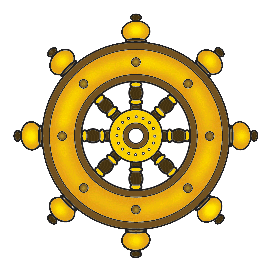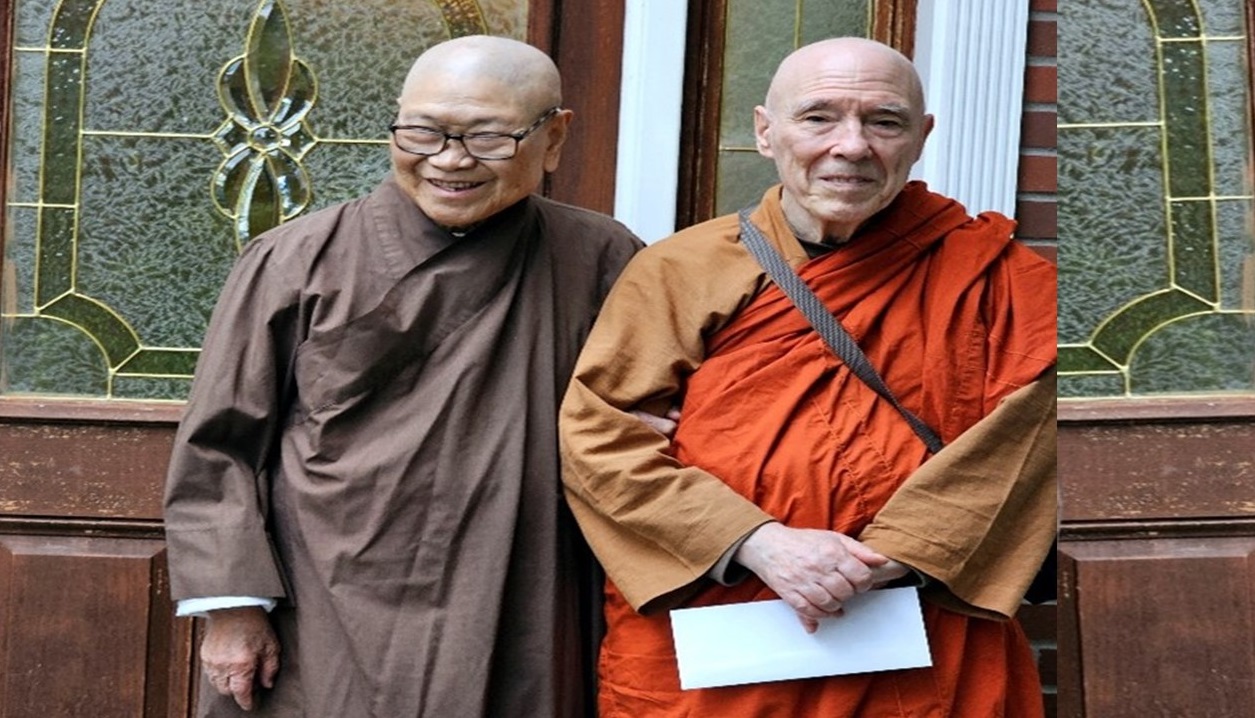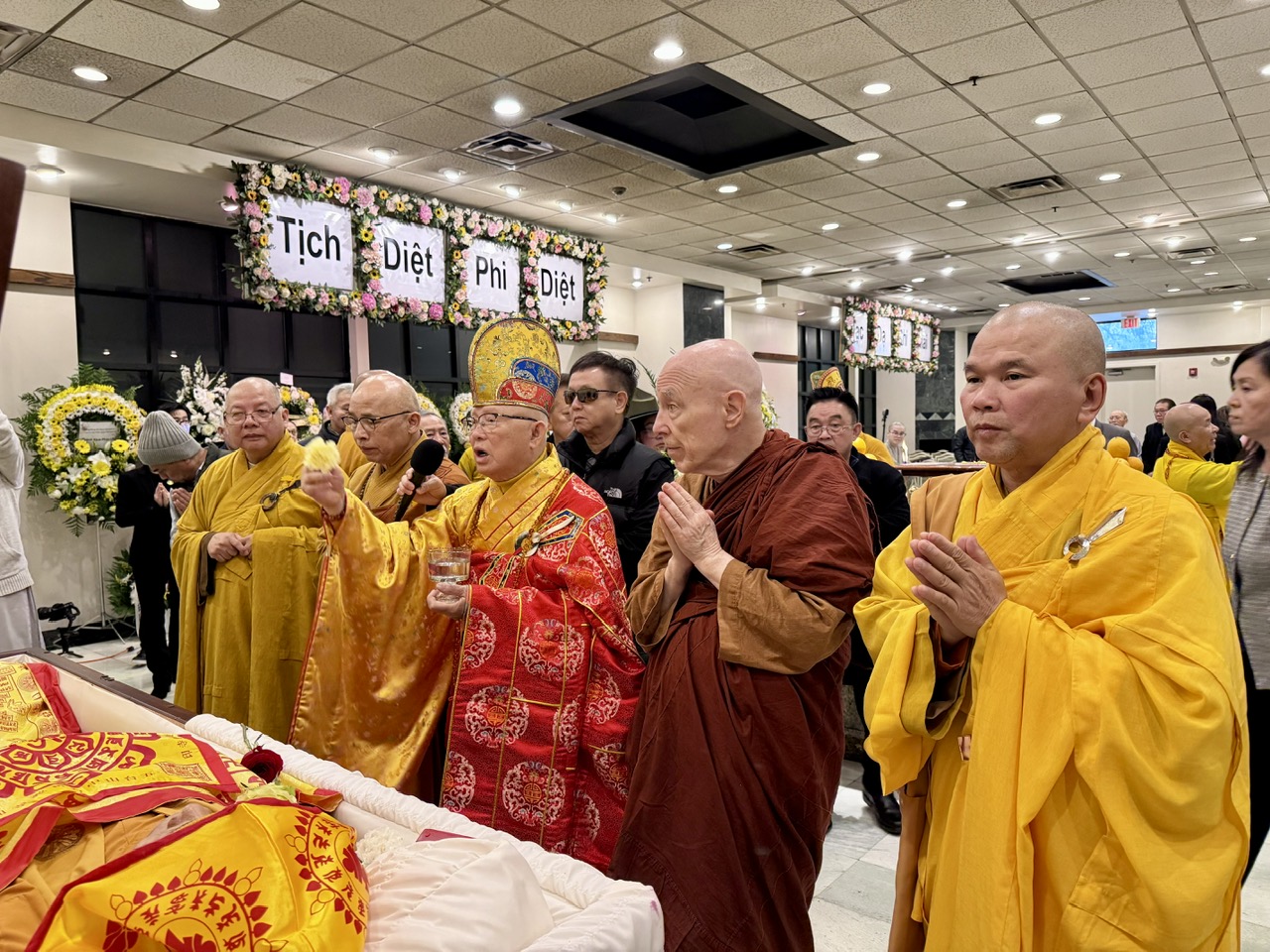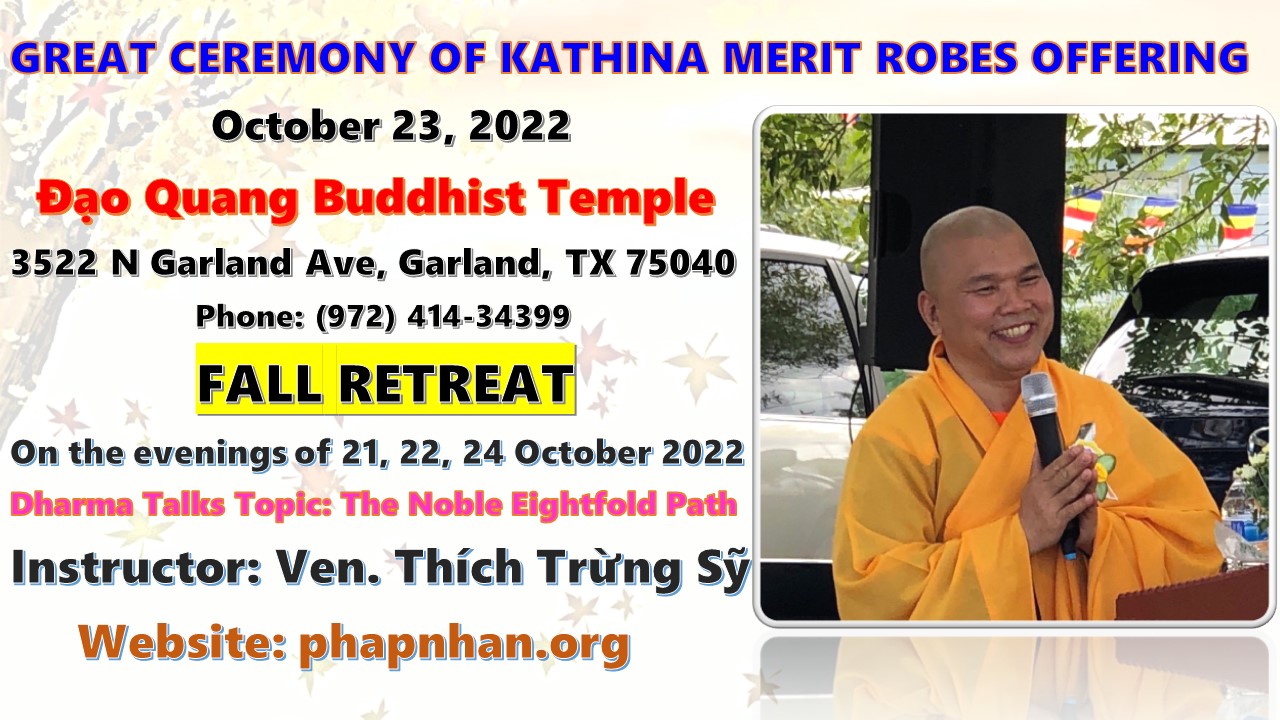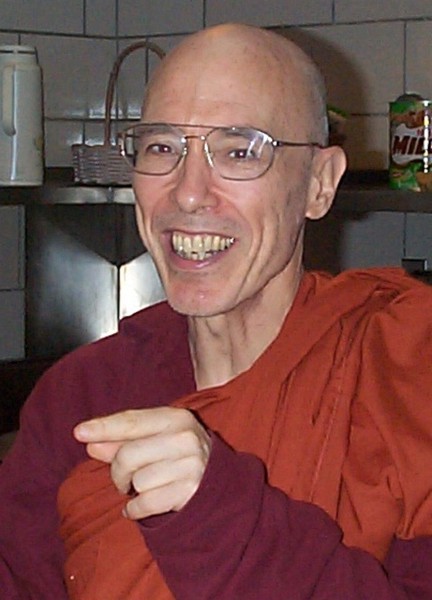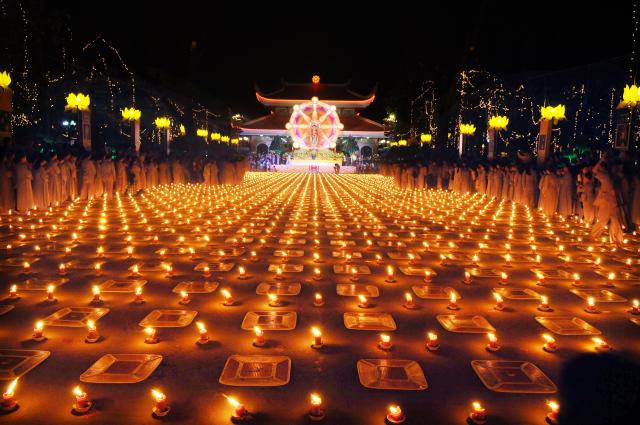Maha Thero Ven. Thích Minh Châu Bhikkhu Bodhi
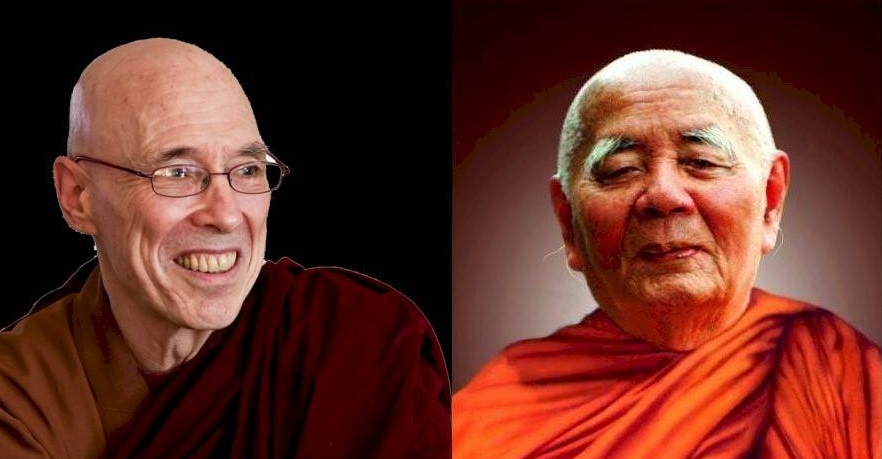
MY FIRST ENCOUNTER WITH A BUDDHIST MONK
Bhikkhu Bodhi, Aug 4, 2008
In the first week of August, 1965, after finishing summer school, I set out to travel by car from New York to California. I was twenty years old and in September would be entering my senior year at Brooklyn College . I wanted to visit a friend who was spending the summer in San Francisco and I managed to find a ride with a couple of fellow students. We started from a luncheonette near Brooklyn College on a bright Monday morning, and after a full day on the road we stopped in Madison , Wisconsin , to spend the night at the home of some friends of the people with whom I was traveling.
This was the first time I had ever traveled west of the Pocono Mountains and the experience promised to be an exciting one. After a good night’s rest, the next morning I decided to take a walk. It was a bright, sunny day. My steps led me through quiet streets to a large beautiful lake bordering the University of Wisconsin. Turning inland, I soon found myself on the campus. As I was approaching a mall in the middle of the campus, something astonishing happened. To the right of my field of vision, the door of a big stone building suddenly swung open and out stepped a middle-aged man with East Asian features wearing a yellow-orange robe. He was immediately followed by a tall American man, who then caught up with him, and the two walked side by side talking.
At once I realized that I was looking at a Buddhist monk. I had never seen a Buddhist monk before, and in America at that time the number of real Buddhist monks could probably be counted on one hand. I had just begun to read about Buddhism a few months earlier, and I knew from my reading of Hermann Hesse’s Siddhartha that Buddhist monks wore saffron robes. Thus I could identify the person I was seeing as a bhikkhu. I was struck with wonder and amazement at the sight of this serene, self-composed man, who radiated a lightness, inner contentment, and dignity I had never seen before in any Westerner. The American man alongside him, presumably a professor, seemed to show him a certain respect and deference, which suggested to me that he was not an ordinary monk but a person of some stature. Just watching him walk across the mall, I was filled with joy and happiness. I think my feeling might have been similar to what a young brahmin in ancient India might have felt if he looked up and for the very first time saw, walking down a path close by, a monastic disciple of the ascetic Gotama, the man that people called “the Awakened One.”
I must have been about seventy yards from the path along which the two men walked. I wanted to approach the monk and ask him who he was and what he was doing, and many other questions; but I was too shy, afraid that I would appear foolish. So I just stood there watching him, devouring him with my eyes, observing his every movement during the four or five minutes it took for them to walk across the mall. I was transfixed; I felt transported to another dimension of being. Something in my heart stirred with a deep yearning. I think that if someone had come up behind me and stuck me with a pin I would have felt nothing, so absorbed was I in the figure of this monk. Then he and the professor reached another building, the professor opened the door, and the two men vanished inside. I still felt joy at this chance encounter with a Buddhist monk, but my joy was now dimmed by a note of sadness. For my heart sank at the thought that this adventure was over and I had lost the opportunity to tap a living source of the wisdom of the East. Now, I thought, that wonderful monk will go his way, and I must go my way, and our paths will never cross again.
The workings of karma are indeed strange and unfathomable! A little more than a year later, in September 1966, I entered Claremont Graduate School in California (twenty-five miles east of Los Angeles) to begin a doctoral program in philosophy. In the spring semester a Buddhist monk from Vietnam came to study in the same university and moved in just below me in the graduate residence hall. He was not “serene and self-composed” like the monk in Wisconsin but a “happy-go-lucky” type who played the banjo, sang Vietnamese folk songs, smoked French cigarettes, cooked gourmet pork and chicken dishes (though by his Mahayana monastic vows he was supposed to be vegetarian), and studied political science – a subject about which he could speak with a boldness that would have drawn blushes from Henry Kissinger. For all these reasons, despite my interest in Buddhism, I initially kept a distance from him. Still, once I got to know him, I came to like him and eventually accepted him as my first Buddhist teacher. By the time the summer of 1967 came, we were sharing the same apartment in the graduate residence hall and later moved to a small house off campus.
One day (I think it was in November 1967) he told me that a distinguished Buddhist monk from Vietnam named Ven. Thich M inh Chau was in the U.S. and would soon be visiting Los Angeles . Ven. Minh Chau, he said, was the rector of Van Hanh University and an accomplished Buddhist scholar. He had gotten a doctorate from Nalanda Buddhist Institute in India and had written an important comparative study of the Pali Majjhima Nikaya and the Chinese Madhyama Agama. My monk-friend was planning to go to L.A. to meet Thich Minh Chau and he invited me to accompany him.
So one bright morning in the late autumn we arrived at the house of the Vietnamese family with whom the distinguished monk was staying. When the Ven. Minh Chau came out from his guest room, I saw a middle-aged man draped in a yellow-orange robe, serene and self-composed, dignified in manner, radiating goodness and sagacity. He looked indeed very much like the monk that I had seen two years before crossing the campus of the University of Wisconsin . Still, I couldn’t be sure, as it was not unlikely that two middle-aged East Asian monks could look alike. I had seen the monk at Wisconsin from a distance of seventy or eighty yards and thus couldn’t distinguish his facial features very well. So I decided to inquire. I had to wait patiently while my monk-friend, Ven. Minh Chau, and the host family spoke in Vietnamese. When I got an opportunity I asked him, “Is this your first visit to America , sir?” He said, “No, I was here a few years ago.” That was what I expected. Then I asked: “By any chance, could the Venerable have been on the campus of the University of Wisconsin in early August 1965?” And he said, “In fact I was. I was visiting my friend, Professor Richard Robinson, who started a program of Buddhist Studies there.” Then I told him about that day when I had watched him walk across the campus. He chuckled gently and said, “So this is not the first time we are meeting.”
Several years later, when Ven. Thich Minh Chau next visited the U.S. (perhaps it was 1969), he stayed with us for a couple of days at our house in Claremont . Still later, when I was planning my trip to Asia to receive bhikkhu ordination and study the Dhamma, he gave me useful advice and provided me with a beautiful open letter of introduction to Buddhist authorities in Asia . I kept that letter and still have it with my belongings in Kandy . It was he who suggested that, when I go to Sri Lanka , I study with Ven. Nyanaponika Mahathera, though I could not fulfill that aim for several years after my arrival in the island. During my first years as a monk in Sri Lanka I occasionally wrote to Ven. Thich Minh Chau for advice and he always answered me promptly and thoughtfully.
*
I lost contact with him after South Vietnam fell to the Communists in 1975, but when planning this lecture, I recalled our earlier meetings, and these memories became so vivid that I felt I had to make inquiries about him. Through the internet, I contacted a Vietnamese webmaster in Australia and found out he is still alive in Ho Chi Minh City , though weak and ill with Parkinson’s disease. He must be close to 90 years of age. I have written a letter to him and sent it by e-mail to the Australian Vietnamese webmaster, who has forwarded it to a friend of his, a monk in Vietnam who is a former student of Ven. Minh Chau.
Over the past few decades, before his illness incapacitated him, Ven. Thich Minh Chau translated into Vietnamese the four Nikayas of the Pali Canon. This fact I learned only very recently. Now here is the remarkable and uncanny thing that raises some interesting questions. On that day in early August 1965, a twenty year old American college student, who would one day be the co-translator of the Majjhima Nikaya, translator of the Samyutta Nikaya, and (let us hope) some day the translator of the Anguttara Nikaya, encountered by sheer chance a Vietnamese monk, almost thirty years older than himself, who would translate the four Nikayas into Vietnamese. The American student at that time was not at all involved in Buddhist studies and had just started to read about Buddhism. He had no intention of meeting the monk, and in fact they did not meet face to face. Looked at from the standpoint of objective causality, the encounter was sheer coincidence. The American merely made a chance turn while taking a walk in a town he had arrived at by chance, saw the monk from the distance, and then went away without even knowing who he was. The monk didn’t see the American at all.
But what made me decide to take a walk that morning, and to turn off the lakeside road on to the campus at just that point and at just that moment? Was it really entirely a matter of chance, a mere series of random decisions? And if we can raise these questions, then let’s ask: What broader loop of conditionality might have connected my trip to California with the monk’s trip to Wisconsin at just that time? If I remember correctly, we were due to leave Brooklyn two days earlier, but a last-minute hitch forced us to postpone our departure until that Monday morning. If we had left as originally planned, my meeting with the monk would probably not have taken place.
When I left the campus, convinced we would never meet again, I did nothing to consciously facilitate another meeting with him. Yet I made a whole series of decisions, without any conscious design, that brought us into contact once again, and this time in a situation where we would be facing each other as fellow Dhamma-farers. I selected a graduate school that eventually brought me into contact with another Vietnamese monk with whom I became friends – yet I selected it without even knowing that this monk would attend that school (in fact, without even knowing anything about Vietnamese Buddhist monks); and through my friendship with him, I came to meet the monk whom I had seen two years earlier, whose deportment had so impressed me – yet without knowing that these two monks were acquainted. Though I knew that Thich Minh Chau had written a scholarly comparison of Pali and Chinese texts, years later, when I took up the work of translating Pali texts, I didn’t know that he was engaged in translating Pali Nikayas into Vietnamese. Yet our projects, in our respective mother languages, are almost identical. Was this also in some way foreshadowed in that chance encounter at the University of Wisconsin , a place to which I have never returned since that meeting and to which I shall probably never return in the course of this life?
Please enjoy reading the website below.
http://bodhimonastery.org/my-first-encounter-with-a…
.
https://phapnhan.org/tv/hoa-thuong-thich-minh-chau-ty-khuu-bodhi/

